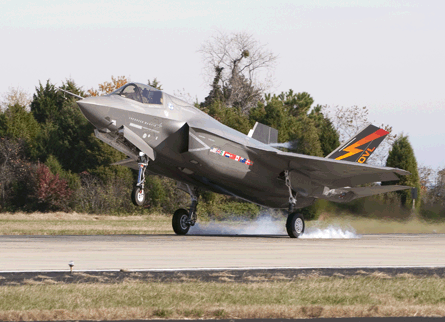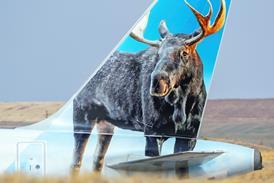Extending development by three years on two F-35 variants would not be enough to keep the restructured programme on track.
But Lockheed Martin's flight-test programme gained significant new resources to reduce the risk of further delays in the overall restructuring announced on 1 February.
Namely, the US Department of Defense will buy another flight-test aircraft in the fourth lot of low-rate initial production (LRIP). The US Marine Corps and US Navy also would "loan" three operational aircraft to Lockheed to participate in the flight-test programme.
 |
|---|
© Lockheed Martin |
Doug Pearson, Lockheed vice-president for the F-35's integrated test force, explains how the new resources will be employed, starting with the fifth instrumented carrier variant.
The latest version of the flight-test schedule - internally named V16 - raised concerns because flight sciences testing for the carrier variant "stuck out to the right six months or so", Pearson says. He asked for approval to add one more aircraft - dubbed CF-5 - for delivery in 2012.
Where Lockheed tests the F-35Lockheed Martin's 600-strong integrated test force is divided into two groups at Edwards AFB, California and NAS Patuxent River, Maryland. With four aircraft deployed to Patuxent River as of late June, Lockheed's integrated flight-test team numbers about 340. Another roughly 250 employees are based at Edwards AFB. The numbers will continue growing as all 14 flight-test aircraft arrive by the end of the year. Lockheed adds 20-50 new staff members as a new aircraft arrives at each location, although the average number declines as more aircraft are added. About 21 pilots will eventually join the flight-test team as well, allowing a crew rate of 1.5 per aircraft. The pilot roster today includes five pilots from Lockheed Martin, two US Air Force pilots at Edwards, and three US Marine Corps pilots and one test pilot from BAE Systems at Patuxent River. |
The extra asset will allow Lockheed to "bring carrier variant flight sciences work forward by several months", Pearson says. "We'll transfer work that we would have done on CF-1 and CF-2 to CF-5. That gives us a little redundancy."
Three more aircraft will be borrowed from the operational fleet, but not all of them will be fully instrumented as other test aircraft, Pearson says.
Lockheed will borrow the nineteenth and 20th short take-off and vertical landing F-35Bs, named BF-19 and BF-20.
BF-19 will be instrumented and inducted into the climate chamber at Eglin AFB, Florida for severe weather testing, then returned to the USMC's operational fleet, Pearson says.
Meanwhile, BF-20 will be used in 2013-14 to perform "specific weapons-related work", Pearson says, apparently to spare test points from the mission systems fleet. Using BF-20, Pearson says, "will allow us a little redundancy with our mission systems work".
Finally, Lockheed also will borrow CF-11 from the USN's operational fleet, for "very specific mission systems work", he says.
Source: Flight International























